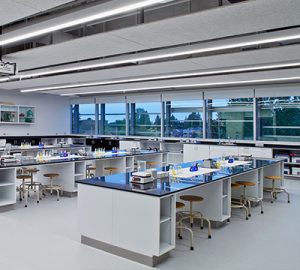Introduction to Lab Tables
Lab tables are an essential component in various scientific settings, providing a stable and durable surface for experiments, research, and learning. They are specifically designed to withstand the rigors of laboratory work, including exposure to chemicals, heat, and other potentially harsh conditions.
Key Features of Lab Tables
Durability and Resistance
Lab tables must be highly durable, capable of resisting corrosion, heat, and chemical spills. Materials like stainless steel, epoxy resins, and phenolic resin are common choices due to their long-lasting properties. These materials ensure the table remains functional for years, often exceeding a lifespan of 10 to 15 years with proper maintenance.
Customization for Specific Needs
Customization is crucial in lab furniture to cater to the specific needs of different scientific disciplines. This includes varying sizes and dimensions, with standard lab tables often measuring around 60 inches in length and 30 inches in width. Height can also vary, typically ranging from 30 to 36 inches to accommodate different user preferences and laboratory tasks.
Safety and Ergonomics
Safety and ergonomics are paramount. Lab tables often feature rounded edges to prevent injuries, and some have adjustable heights to suit different users. This adaptability enhances comfort during long hours of work, reducing the risk of strain or injury.

The Importance of Quality in Lab Furniture
Ensuring Long-Term Investment
When selecting chemistry lab furniture, quality is a significant factor. High-quality tables may come with a higher initial cost, but they offer better value in the long run. The cost of a standard lab table can range from $200 to over $1000, depending on materials and customization features.
Impact on Laboratory Efficiency and Productivity
Quality furniture directly impacts lab efficiency and productivity. Stable and durable tables ensure experiments can be conducted without disruptions caused by unstable or deteriorating surfaces. This stability is crucial in sensitive experiments where precision is key.
Conclusion
Lab tables are more than just furniture; they are a vital part of the scientific workspace. Their design, material, and quality directly impact the safety, efficiency, and effectiveness of laboratory work. Investing in high-quality lab tables is essential for any scientific or educational institution to ensure a safe and productive environment.